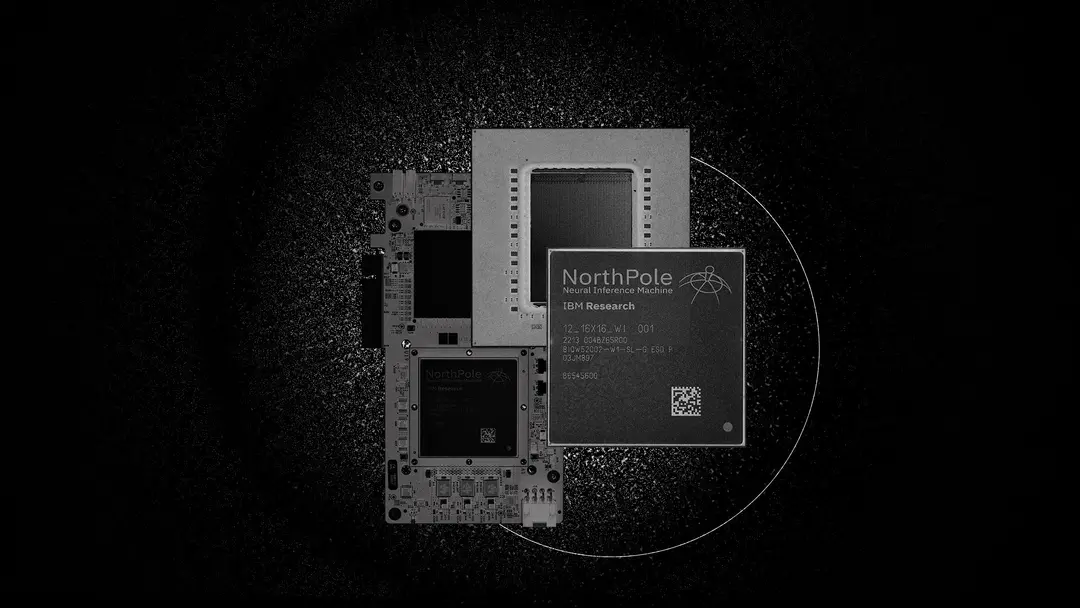IBM Research’s Dharmendra Modha has developed a new chip prototype, NorthPole, that could revolutionize the efficiency of AI systems. Inspired by brain computations, the chip eliminates the need to shuffle data between memory and processing units, a common issue known as the von Neumann bottleneck. NorthPole has demonstrated higher energy efficiency, space efficiency, and lower latency than any other chip currently on the market. It is also 4,000 times faster than TrueNorth, a previous brain-inspired chip. The chip’s design allows it to be integrated into systems easily and reduces load on the host machine.
A New Era in AI Chip Architecture: IBM’s NorthPole
IBM Research’s lab in California has been developing a chip prototype that could revolutionize the efficiency and application of artificial intelligence (AI). This development comes at a time when AI has moved from theoretical concepts and small-scale tests to large-scale enterprise use. However, the hardware currently used to run AI systems, while increasingly powerful, was not designed with today’s AI in mind. As AI systems scale, the costs escalate, and the traditional theory of processor development, Moore’s Law, has slowed.
IBM’s new research, nearly two decades in the making, could drastically shift how we can efficiently scale up powerful AI hardware systems. The new chip, named NorthPole, is a significant departure from the traditional von Neumann architecture, which separates processing units and memory storage. This separation has led to the von Neumann bottleneck, where data shuffling between memory and processing units consumes time and energy. NorthPole, inspired by the brain’s computing method, aims to eliminate this bottleneck.
NorthPole: A Breakthrough in Chip Architecture
NorthPole is an extension of TrueNorth, a previous brain-inspired chip. In tests on popular image recognition and object detection models, NorthPole demonstrated higher energy efficiency, higher space efficiency, and lower latency than any other chip currently on the market. It is also approximately 4,000 times faster than TrueNorth.
NorthPole’s architecture blurs the boundary between compute and memory. All of the memory for the device is on the chip itself, rather than connected separately. This eliminates the von Neumann bottleneck, allowing the chip to carry out AI inferencing considerably faster than other chips on the market. NorthPole was fabricated with a 12-nm node process and contains 22 billion transistors in 800 square millimeters. It has 256 cores and can perform 2,048 operations per core per cycle at 8-bit precision, with potential to double and quadruple the number of operations with 4-bit and 2-bit precision, respectively.
Potential Applications and Limitations of NorthPole
While research into the NorthPole chip is ongoing, its structure lends itself to emerging AI use cases, as well as more well-established ones. The NorthPole team has primarily focused on computer vision-related uses, such as detection, image segmentation, and video classification. However, it has also been tested in other arenas, such as natural language processing and speech recognition.
Despite its advantages, NorthPole has a significant constraint: it can only easily pull from the memory it has onboard. All of the speedups that are possible on the chip would be undercut if it had to access information from another place. However, through an approach called scale-out, NorthPole can support larger neural networks by breaking them down into smaller sub-networks that fit within NorthPole’s model memory, and connecting these sub-networks together on multiple NorthPole chips.
Future Directions for NorthPole
The current state of the art for CPUs is 3 nm, and IBM itself is already years into research on 2 nm nodes. This means there’s a handful of generations of chip processing technologies NorthPole could be implemented on, in addition to fundamental architectural innovations, to keep finding efficiency and performance gains.
The development of NorthPole is just one important milestone in a continuum that has dominated the last 19 years of Dharmendra Modha’s professional career. He has been working on digital brain-inspired chips throughout that time, knowing that the brain is the most energy-efficient processor we know, and searching for ways to replicate that digitally. The answer was “brain-inspired computing, with silicon speed,” according to Modha.
Conclusion
The development of NorthPole represents a significant step forward in chip architecture, offering the potential for more efficient, robust AI systems. While there are still challenges to overcome, the chip’s design, which blurs the boundary between computing and memory, could revolutionize how AI is used. As research continues, this technology’s potential applications and improvements are vast, marking an exciting new era in AI development.
External Link: Click Here For More

